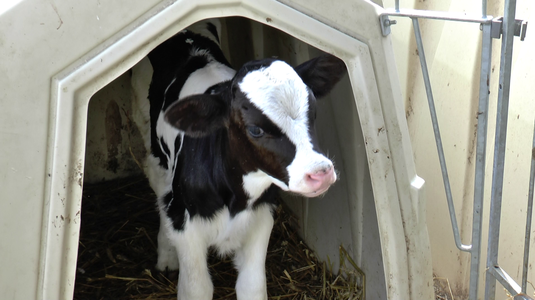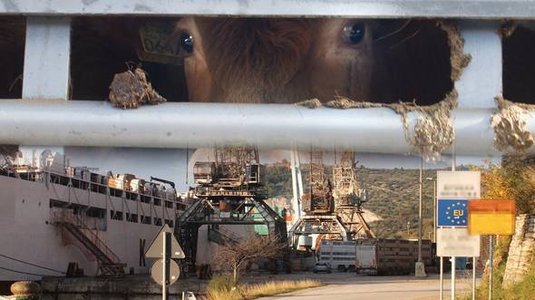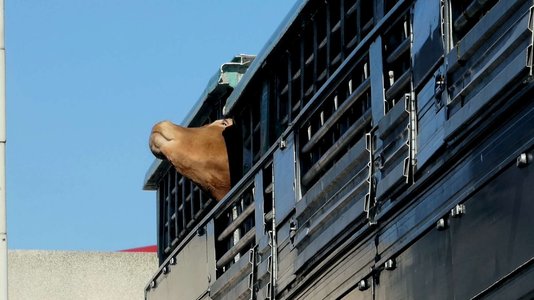Dossiers
Import of horsemeat from overseas
1. Introduction
Since 2012 we have repeatedly carried out investigations in Argentina, Australia, Canada, and Uruguay. Since then, our investigation teams documented numerous cases of non-compliance with applicable EU requirements relating to animal welfare and the traceability of horses. Currently, EU animal welfare standards only apply to slaughterhouses. No requirements are imposed by the EU for assembly centres, feedlots, and transport. The national laws on the protection of horses during transport in overseas countries are far below EU standards. Horses are transported in inadequate vehicles without roofs or watering systems. They are tightly packed together instead of being separated in individual stalls, as required in the EU during long-distance transport of horses. In Argentina for example, horses can be transported for 36 hours non-stop without food or water.
Argentina is the largest exporter of horsemeat to the European Union (9,614 tons in 2021), followed by Uruguay (3,996 tons) and Canada (697 tons). While the imports from Canada have been significantly decreasing since 2012, those from Argentina and Uruguay have been gradually increasing. This development might be as a result of the project “Respectful Life”, which was launched by the European importers in 2015. “Respectful Life” is a marketing platform that was set up in response to our criticism, after we published footage of cruelty against horses in South America. The reports from the announced audits show a completely different picture than reports from our unannounced and undercover investigations. “Respectful Life” seems intent on white-washing the evidence of systematic animal cruelty that we have presented for years.
A similar development can be observed in Switzerland. In 2013/14, when all Swiss supermarkets stopped selling horsemeat from overseas as a consequence of our criticism about horse abuse, the imports decreased drastically. However, after Swiss importers started commissioning audits and certifications by SGS of the overseas slaughterhouses, the imports increased again since 2015, in particular from Argentina. In 2021, Switzerland imported 613 tons of horsemeat from Argentina, which is more than from any other country. This horsemeat is sold in restaurants and butcheries, while the supermarkets still only sell horsemeat from western European countries.
2. Animal welfare issues related to horsemeat production overseas
2.1 Argentina
In Argentina, four slaughterhouses are approved for export of horsemeat to the EU and Switzerland. The largest two are Lamar, near Buenos Aires, and Land L (formerly General Pico) in Río Cuarto. Up to 200,000 horses are slaughtered annually for their meat to be exported. Their origins may be legal or illegal. They include stolen horses, workhorses, blood mares, rodeo horses, racehorses, and polo ponies.
Eight years after our first investigation in Argentina, the severe abuse and neglect of horses destined for slaughter continues on the same level. At slaughterhouses and assembly centres, horses are exposed to extreme weather conditions and the supply of water and feed is often insufficient. Injured, sick and weak horses receive no veterinary care and they are left to die unassisted. There are several hundred assembly centres and many are far away from the slaughter plants, often more than 1,000 km, which leads to transport times of 18 hours and more. Horses are transported over long distances without water, crammed together in unsuitable cattle trailers, and many sustain injuries or do not survive transportation.

In Argentinian slaughterhouses, very serious animal welfare violations persist to this day, one of the examples being downer horses dragged with chains from the trucks and left to die in the unloading area. Horses are often delivered during the night in order to avoid observers when downer horses or dead animals are unloaded. Furthermore, no audits take place at night.
2.2 Uruguay
Like in Argentina, horses are not bred for meat production in Uruguay either. The horses slaughtered in EU-approved plants include former riding horses, workhorses, rodeo- and racehorses, as well as mares used for PMSG production.
There are three EU-approved horse slaughterhouses in Uruguay. Clay and Sarel are the largest, El Amanecer is smaller. The findings of our repeated investigations show that horses are systematically neglected and mistreated before being slaughtered for export of their meat to the EU and Switzerland. The handling of the horses at auctions, assembly centres and slaughterhouses is often violent. They are beaten, kicked and receive electric shocks. Injured, sick and dying animals are left without assistance instead of receiving veterinary care or being emergency killed.
All three slaughterhouses run their own assembly centres right next to the slaughter buildings. There, most horses have no protection from sun, rain, and wind. Severely injured horses are left unattended for several days up to several weeks.
Uruguay still has no legislation for the protection of animals during transport. In general, transport distances are shorter than in Argentina. However, the journey times may exceed 15 hours, for example if the driver takes several breaks and/or arrives at the slaughterhouse out of opening hours.

2.3 Australia
In Australia, transport distances are particularly long. This is due to the fact that there is currently only one plant that is approved for slaughtering horses for human consumption - the Meramist abattoir in Queensland.
In the assembly centres of the kill buyers, the horses are left without veterinary care and with insufficient feed supply. The transport vehicles are open cattle trailers which are inadequate for horses. Animals that are unfit for transport due to severe emaciation, health problems or injuries are loaded regardless. It happens regularly that horses die during the journey to the slaughterhouse.
Covert cameras recorded the activities at the Meramist abattoir on 22 randomly selected slaughter days over a period of two years. The footage shows the brutal handling of the horses by the staff. Workers are observed beating and kicking the horses, slamming gates on them, and systematically using electric shocks to move them forward.
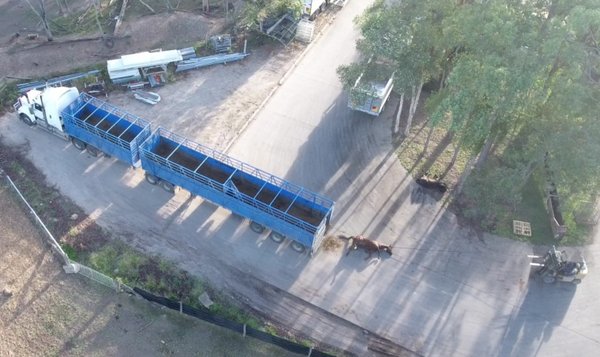
The shocks are also applied to the anogenital area of the horses, and even used on downer horses. The horses’ fear is aggravated by the fact that they are able to see the slaughter room. Horses fallen in the raceway are dragged to the place of slaughter with a winch, instead of being killed where they lie. Some horses are tortured for several minutes by incorrect stunning and repeated bolting, up to five times. Some horses are still showing signs of consciousness when being hoisted and bled out.
2.4 Canada
There are two EU-approved horse slaughterhouses in Canada: Bouvry Exports in Alberta and Viande Richelieu in Quebec. Bouvry Exports is the largest horse slaughter plant. From the company’s base of operations in Alberta, it manages several feedlots in the surrounding area.
Since 2017, the EU demands a six-month residency period for US horses sent to slaughter in Canada for the EU market in order to ensure that there are no drug residues in the meat. Although the EU’s requirement for US horses is to remain six months in Canada before being slaughtered, it does not set any minimum standards concerning their welfare. In the feedlots run by Bouvry Exports, thousands of horses are kept in the open without any shelter, at temperatures as low as -33°C in winter. This leads to foals freezing to death at birth. The massive feedlots are operated with a small number of workers whose focus is on ensuring that the feed troughs are never empty. The only purpose of the feed is to make the horses gain weight. Painful hoof and metabolic diseases are the result. No care is provided to the horses, their hooves are neglected and overgrown, injuries and diseases remain untreated. They are kept in dirty, muddy and crowded pens, without any retreat possibilities.

In addition to the feedlot conditions, which are not covered by EU legislation, our reports show non-compliance of the Bouvry slaughterhouse with the applicable welfare requirements of the EU slaughter regulation. Horses in the outdoor pen area of the slaughterhouse have no weather protection and do not receive veterinary care. Public documents obtained from the Canadian authorities provide evidence of serious animal welfare violations during unloading, housing and slaughter of horses at the Bouvry Exports plant.
Update 2022:
Bouvry’s assembly centre in Shelby, USA, which served as a gathering point for horses the company acquired at different auctions across the United States, was closed in September 2022.
3. Traceability & Food Safety
3.1 Risk of drug residues due to the lack of traceability
In the above-mentioned exporting countries, horses are not considered to be food-producing animals and are commonly given drugs which are prohibited in the EU for use in horses destined for human consumption, such as phenylbutazone. The countries have no system of equine identification and traceability comparable to that of the EU, where horses are microchipped and have a passport showing their medical history. The traceability systems in place are unreliable as they rely on the honesty of horse owners and dealers, who give sworn declarations on the medical treatments in the last six months prior to slaughter. This cannot be considered a sound foundation of food safety for EU consumers. Instead of being microchipped, the horses are tagged with neck collars, ear tags or stickers shortly before being sent to slaughter. These are no reliable means of identification. Due to the lack of traceability, horses of unknown origin and with unclear drug history, as well as stolen and smuggled horses, enter the food chain which poses a high food safety risk for European consumers. The slaughtered horses also include competition and breeding horses. With sport horses, the risk of drug residues in their meat is particularly high.
Since 2017, horses imported to Canada from the USA have to remain in Canada for at least six months prior to slaughter if the meat is destined for the EU market. The reason for this rule are food safety concerns.

However, some veterinary substances commonly administered to US horses are strictly prohibited in the EU for use in food-producing animals, such as phenylbutazone or anabolic steroids. The six-month residency requirement of the EU does not effectively prevent meat from horses which have been treated with these substances from entering the food chain. Thus, a health risk for consumers remains.
Argentina introduced new legislation in March 2019 with the aim of improving equine traceability. However, the new law has not been implemented to date, proven by the fact that a large number of horses at assembly centres and slaughterhouses are still found without ear tags, although they should be ear-tagged when leaving the holding of origin. It must be assumed that a big amount of horsemeat from Argentina comes from horses of unknown origin, many of which are likely to have been stolen.
3.2 Stolen horses entering the supply chain of Argentinian slaughterhouses
Since 2013, we have highlighted that the Argentinian system of equine identification is inadequate to guarantee traceability and opens the door to fraud. For more than two decades, Argentinian media have been reporting on the mafia-style machinations of the slaughterhouses, assembly centre operators, horse rustlers and corrupt employees within SENASA and the police.
A new traceability legislation, which came into force in March 2019, has not prevented the introduction of stolen horses into the supply chain of slaughterhouses, as shown by several cases in 2019 and 2020. Organised crime relating to horsemeat production is systematic in Argentina; the people and institutions involved have been the same for many years. The newspaper Al Sur reported in April 2020:
“Behind this lucrative business is a mafia that begins with the horse rustlers, continues with the dealers and ends in the slaughterhouses,
who look the other way when admitting ill-gotten animals.”
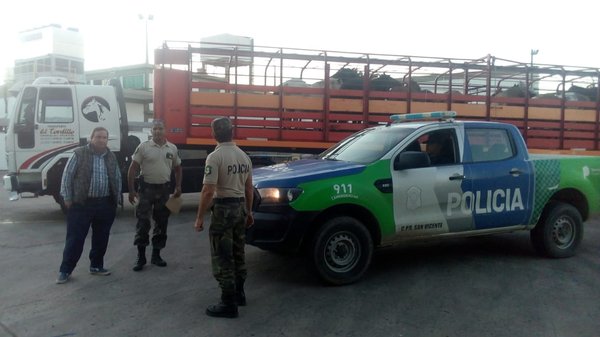
3.3 Smuggled horses entering the supply chain of Uruguayan slaughterhouses
Since 2015, the Uruguayan police have put together a number of special units to convict mafia-like gangs that smuggle horses from Brazil.
In December 2021, we spoke with Willard González, the director of the rural police who is leading the operation “Alien Horse”. The investigation was launched in January 2021, after smuggled horses from Brazil had been detected at an auction. A large-scale smuggling operation was subsequently uncovered: Between 1,500 and 2,000 horses had been illegally brought into Uruguay, then branded and sold. About 90 % of them had ended up in EU-approved slaughterhouses. Willard González is convinced that a large proportion of the horses slaughtered in Uruguay are smuggled horses.
In December 2022, a police operation in Rivera dubbed “Tábano” dismantled a criminal organisation dedicated to smuggling stolen horses from Brazil. The gang included the head of customs in Rivera and a former police officer. The people arrested were found guilty of a series of offences including horse theft, repeat smuggling, and falsification of documents.
4. Audits of the European Commission
4.1 Manipulation of EU audits
For several years, we have been providing evidence that the announced audits of the EU Commission and European importers are manipulated by slaughterhouse operators and horse dealers. Pregnant, injured, sick and emaciated horses are removed before the audits and only a small number of healthy horses remain, if any. Provisional shelters are built and broken roofs repaired, just in time for the visit. The horses are placed on green pastures and have enough food and water available.
The auditors of the EU Commission have ultimately come to realise for themselves that the audits are being manipulated. The reports of the latest EU audits in Uruguay and Argentina state that the assembly centres, including those annexed to slaughterhouses, were either empty or the horses had been exchanged shortly before the visit.
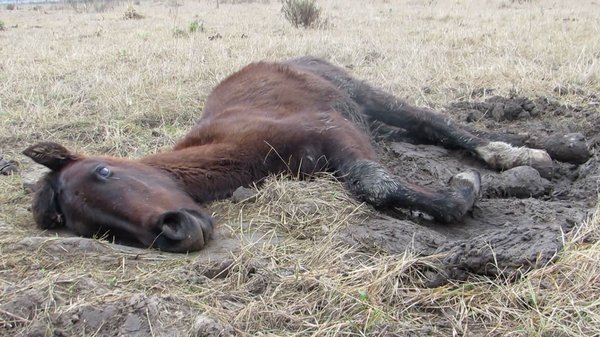
4.2 Findings relating to animal welfare
Although the announced audits of the EU Commission are carefully prepared for by the competent authorities and the horsemeat industry, the auditors have repeatedly detected animal welfare problems. The reports are publicly available on: https://ec.europa.eu/food/audits-analysis/audit_reports/index.cfm
The report of an audit in Argentina in 2014 stated: “The results of the necropsy performed on the animals dead on arrival in one slaughterhouse showed that most deaths were possibly due to inadequate conditions of transport (e.g. limb or rib fractures, spleen rupture) or that some animals had pre-existing conditions which were aggravated during the transport (e.g. cachexia, intestinal or uterine torsions and ruptures, asphyxia).”
In 2018, the EU audit team reported, after visiting several assembly centres, so-called acopios, that “the occurrence of deaths of horses in acopios over a substantial period of time without being recorded or detected implies that official services would not be aware of possible animal welfare or other issues, and not be in a position to intervene in a timely fashion.” The report of the latest EU audit in Argentina, conducted in March 2020, comes to the following overall conclusion: “Although the audit did not identify serious animal welfare issues during the visit to one acopio, apart from the lack of shade and insufficient access to water for the number of animals kept, the shortcomings identified in the operation and effectiveness of the control system at these facilities do not allow the central competent authority to provide guarantees that they are under adequate control, and thus to provide assurances that they meet relevant EU standards.” The auditors did “not identify serious animal welfare issues” at the acopio (assembly centre), but they realised that all horses had been swapped shortly before the visit. And this, although they had explicitly asked the competent authority SENASA to ensure that the horses in the acopio were held there until the day of inspection and SENASA had agreed.

4.3 Findings regarding traceability and food safety
Audits of the EU Commission have repeatedly found serious deficiencies relating to traceability and food safety. Furthermore, recommendations of EU audits have been poorly implemented for over a decade. After every audit, the national authorities prepared action plans and promised to improve things, but deficiencies are still found. After so many years of audits, traceability still remains insufficient in all exporting countries.
In Argentina, new traceability legislation was introduced after EU auditors came to the conclusion in 2018 that “the official controls in the assembly centres did not identify all documentary deficiencies, thus full traceability of live horses destined to the European Union market is not ensured by the food business operators running the assembly centres”. However, the new legislation, introduced to solve the existing problems with equine identification, is not enforced to this day. Horses without ear tags and of unknown origin, as well as stolen horses with ear tags, continue to enter assembly centres and slaughterhouses.
In Australia, the most recent EU audit in June 2019 again identified the same problems in relation to the traceability system as in previous years. Indeed, the recommendations regarding traceability of previous audits had not been properly addressed. The system of traceability is obviously still not able to provide guarantees that the horsemeat is free of drug residues, since the last audit report stated:
“The fact that some carcasses are found positive for the presence of medicinal products at the slaughterhouse and that this does not correspond with the declarations about the absence of medical treatments of the horses reported in the horse vendor declarations, implies that these declarations are not always reliable.”
Furthermore, the audit team noted that a positive result for phenylbutazone had been found recently. The report stated that“as described in previous reports, the identification of the horse during the six months prior to slaughter is not always ensured”, because horses are only collared at the time of purchase for slaughter and the generic horse description noted in the vendor declarations does not provide a reliable identification and thus traceability.
In Uruguay, the last EU audit in 2018 concluded that“the guarantees provided by the competent authority in relation to the requirements concerning the residency of the horses and the use of veterinary medicinal products are dependent on the veracity of the sworn statements issued by owners and the official controls of the relevant documents which take place shortly before slaughter, at the assembly centres”. However, these controls could not be assessed at all three assembly centres of slaughterhouses, since“contrary to the specific request from the audit team before the audit, none of the assembly centres were found to be in operation.”
The most recent EU audit in Canada in 2018 identified yet again issues in relation to traceability of both US and Canadian horses destined for export to the EU, with the exception of horses kept in feedlots for six months. The audit report concluded that “the system does not provide full guarantees that horses have not been treated with illegal substances within the last 180 days before slaughter, or that the withdrawal periods of veterinary medicinal products had been respected.”

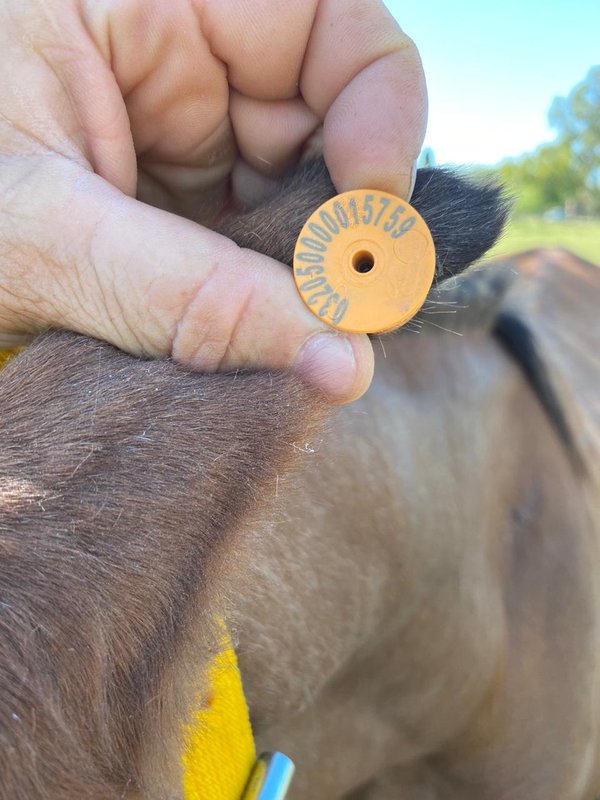
5. Conclusion
We have been documenting the cruel production of horsemeat overseas since 2012. Our investigations have shown that the situation has not improved over the years, despite all the promises made by the Swiss and EU importers, despite animal welfare manuals that have been revised numerous times, and despite repeated audits by importers, authorities, certification companies and researchers.
It is unacceptable that the EU Commission, who finally came to realise that audits are manipulated, is still hesitating to act. The suspension of horsemeat imports from Argentina, Uruguay, Canada, and Australia is well overdue.
Therefore, we call upon the European Commission:
- to remove Argentina, Australia, Uruguay and Canada from the list of third countries from which the import of horsemeat is permitted, since these countries cannot guarantee compliance with the applicable EU requirements, in particular those of Regulation (EC) 1099/2009 on the protection of animals at the time of killing;
- to make access to the European market conditional upon complying with EU equivalent animal welfare standards, not only for slaughter but also for transport and assembly centres in third countries;
- to suspend any horsemeat imports from third countries where horses are not considered to be food-producing animals and where the traceability system used solely relies on the veracity of the sworn statements issued by horse owners and dealers;
- and to condition access to the European market on the respect of traceability and food safety standards, including veterinary drug use, equivalent to those applied in the EU, which means lifelong – rather than 6-month – traceability and recording of medical history.
A suspension of horsemeat imports from Mexico and Brazil has already been imposed as a result of EU audits carried out in these countries. Repeated audits carried out in Argentina, Australia, Canada and Uruguay identified equivalent concerns regarding food safety and animal welfare as those in Mexico and Brazil. While the discussions around free trade agreements may have made the Commission less willing to act decisively on this file, we argue that this should not have been the case. The EU must ensure its rules are respected, especially as the agreements intend to lower tariffs on horsemeat. Cooperation mechanisms can be used to make progress in the future, but it should not mean that animals and consumers are not protected in the meantime.
EU Parliament’s call for an import suspension:
On 20th October 2021, the European Parliament adopted by a large majority a Resolution on a Farm to Fork Strategy for a fair, healthy and environmentally-friendly food system. In its paragraph 129, the European Parliament “notes with concern that several audits carried out by DG Sante as well as detailed NGO investigations state that full traceability of live horses from Argentina destined to the European Union market is not ensured, involving food safety risks, and that animal welfare is compromised; calls on the Commission to suspend the import of horse meat from countries where applicable EU requirements relating to traceability and animal welfare are not complied with”.
This call represents the official position of the European Parliament, even if it is not legally binding on the European Commission. It is high time for the European Commission to act and implement the Parliament’s request.
We urge the European Commission to immediately suspend horsemeat imports from third countries that do not comply with applicable EU requirements, such as Argentina, Australia, Canada, and Uruguay.
The full dossiers on horsemeat from Argentina, Uruguay, Australia and Canada consist of several hundred pages. On request, the dossiers can be made available to competent authorities, politicians and media representatives.
